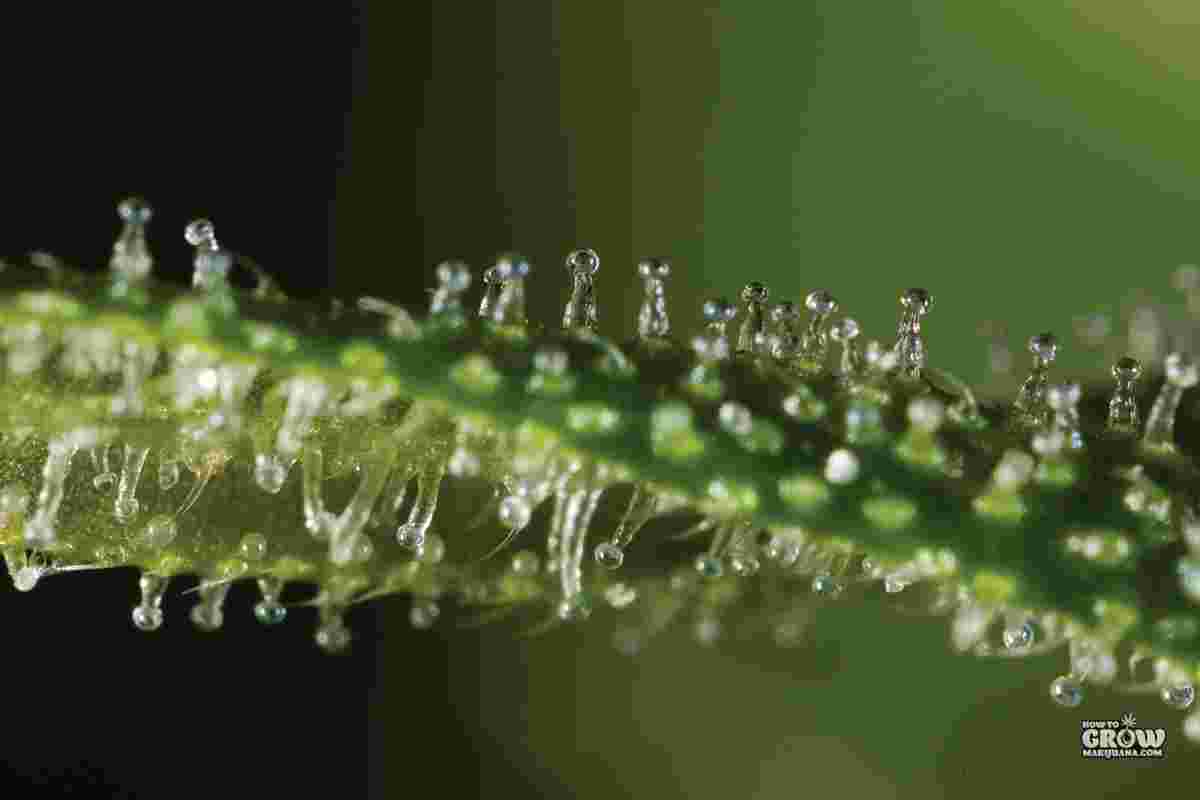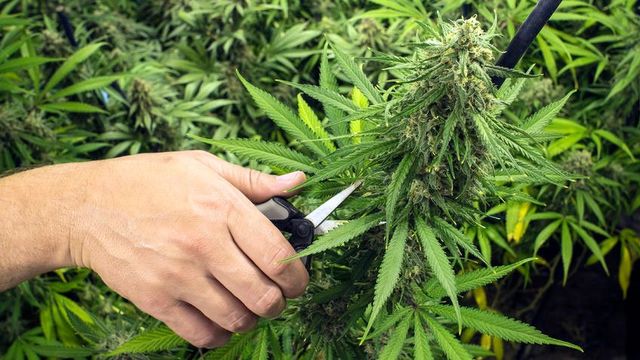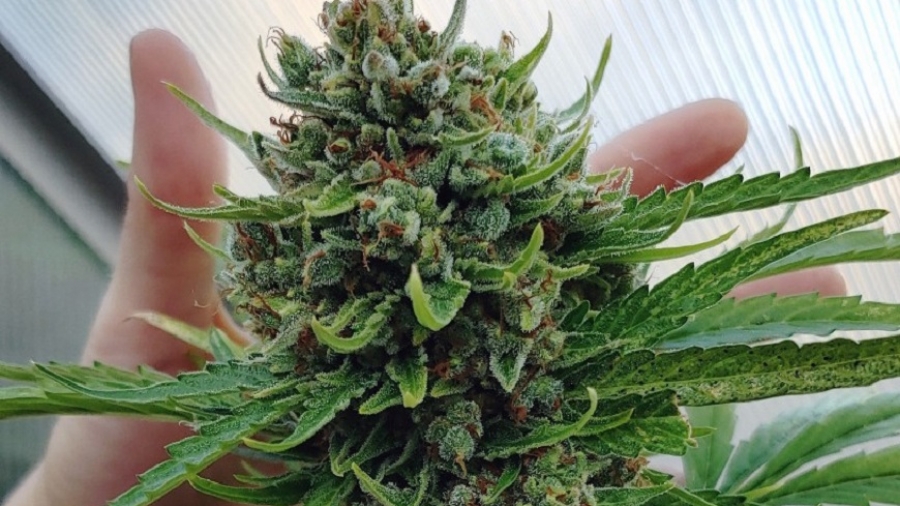OK. You’ve grown your big buds from a tiny seedling to a mature cannabis plant. The hard work of growing is done, and your plants are top heavy with crystal covered buds. The choices you make at this stage will determine the quality and potency of your final product. With a few simple steps of drying correctly and most importantly curing your marijuana, you will significantly increase the potency of your precious crop.
There are three key steps to producing amazing resinous buds at this stage:
1. Timing your Harvest
2. Proper Drying of Buds
3. Proper Curing of BudsWe’ll walk you through each step and show you how to maximize THC, CBD and terpene content. Follow this guide and you’ll enjoy the dankest, most flavorful buds you’ve ever smoked, and you’ll get higher than you ever thought possible from home-grown weed.
Timing Your Harvest
Why it Matters:
Knowing when to harvest your buds is essential to maximizing the cannabinoid content. If you harvest too early you’ll miss out on THC, CBD and other good stuff, but if you wait too long these same molecules will start to degrade.
Maximizing THC in the Bud
Let’s take THC as an example. While it is present throughout the plant, this delightfully psychoactive molecule is most highly concentrated in the resin on the buds. The THC crystals, or trichomes, begin developing partway through flowering, but they really start to coat the buds in the last week or two. Waiting until the trichomes are fully developed will maximize the THC content and thus the potency of the bud.If you wait too long to harvest the resin glands will start to degrade. THC and THCV in the buds will also break down into CBN. This cannabinoid produces heavy sedative effects and a somewhat unpleasant drugged sensation. Proper harvest and drying will limit the amount of CBN in your final buds.
Maximizing CBD
We know now that THC isn’t the only important molecule in marijuana. CBD, CBG, CBN and other cannabinoids moderate the effects of THC. Some, like THCV, have psychoactive effects of their own.CBD is the most popular cannabinoid after THC thanks to its medicinal effects. It is not psychoactive, but it does interact with THC and can affect the quality of the high. Plus it has pain killing, anti-nausea and other important medicinal effects.CBD does not degrade over time like THC. However, CBN has been shown to increase the calming and analgesic effects of CBD. This means that if you wait to harvest until some of the THC in your buds has degraded into CBN you can get a greater benefit from CBD.You can see why timing your harvest just right is important. You didn’t work hard all these months growing big, beautiful, resinous buds just to lose half your THC to CBN or miss out on potency by getting excited and harvesting early.
How to Tell When it’s Time to Harvest
Most seedbanks give you a rough estimate of how long each strain needs to flower before harvest. This is never exact though; there are too many variations in different growing conditions to be able to put an exact length of time on it. Add to that the variation in phenotypes inherent in most cannabis strains, and the varying preferences of individual marijuana users, and you have quite a wide window of opportunity.
Fortunately,
There are lots of signs that your plant is approaching maturity and you are ready to harvest, dry and cure your marijuana. As the flowers grow they will merge together into heavy kolas. You will notice each ovary swell and tiny crystals will be visible around the flowers. The flowers will become sticky to the touch and the aroma may become pungent. As the flowers swell the white pistils begin to darken, going from white to a reddish brown.
Most growers use the color of the trichomes to help them decide exactly when to harvest. The trichomes are the tiny structures on the flower (and trim leaves) of your plant that produce the resin where all that THC goodness is. Do not confuse them with the pistils which are the long hairs protruding from the flower.To get a proper look at the trichomes you will need some sort of magnifier. Simple 20X jeweller’s magnifying glasses, bought on ebay or loupes are easily and cheaply available. Not only do they allow you to inspect the trichomes properly, they also open up an amazing world of imagery and an aspect of your plant that can be fascinating to look at.

So what exactly is it that you are looking for?
As your plant matures the trichomes will go though three observable changes;
- Trichomes swell and heads flatten or ‘mushroom’
- Trichomes change from clear to milky or clouded
- Trichomes begin to turn amber or brown
The image below shows fully formed trichomes going from clear, to milky, to amber.
There are actually three (possibly more) different types of trichomes on cannabis buds, secreting many different cannabinoids and other substances. More trichomes don’t necessarily mean more THC… each strain and each bud will produce its own unique mixture of cannabinoids, all of which interact with one another and your body to create the many different “high” experiences.However the changes in trichome color can provide a decent guide to the relative levels of THC and CBD in each bud.CBD develops later on than THC in flowering. In fact, THC and the flavor imparting molecules called terpenes peak at roughly the same time, when the trichomes are turning milky or cloudy.CBD production doesn’t peak until later, when the terpenes are reddish or amber in color. At this point much of the THC has already degraded into CBN, adding to the sedative effects of CBD.If you observe the trichomes carefully you can choose the moment of harvest to meet your own particular preferences.Do you prefer a heavy physical stone, or a lighter head stone?As a general rule, the longer you leave you plant, the heavier the stone.For most growers harvesting when the trichomes are all clear is too early. Marijuana with clear trichomes will still get you high, but the effects may be light.
Some growers like to take their plants when the trichomes are all milky. This will give you a good hit, but without being too heavy.Most growers like to harvest when a given percentage of trichomes have turned amber; anywhere from just a couple of individual amber trichomes to around 80% amber. The stone that you can expect just gets heavier and more physical the further you go along this scale.Of course, as always, the strain that you choose can have some influence on this. As a general rule you could say that:
- Indica dominant strains have a heavier stone by their nature. For indicas there may be no need to wait for amber as partially cloudy trichomes may still give you a body stone.
- Sativa dominant strains are by their nature more cerebral and less physical. To get a good bake from a long flowering sativa you may need to wait until at least 25% or more of the trichomes have turned amber.
You will need to learn from your own experience of the results you get from your set up. The rule of thumb remains true though – the longer you leave it, the more narcotic the effects.
How to Harvest Marijuana

Now you know why timing your harvest is important and how to go about doing it.Before you actually cut your plants down, we need to take a step back and consider flushing your marijuana plants.
Flushing
Whether they are grown in soil or a hydroponic medium, cannabis plants can suffer from a build-up of salts or nutrient residues. Many growers flush their plants using plain water every 10 days throughout the grow to help clear out this build-up.When you feed your plants they do not use all of the nutrients that you give them immediately. Some are stored and used later on. But if you continue feeding and your plant never has to use up those reserves, they accumulate and stay in the leaves, stems and buds. If the nutrient mix you are using is not perfectly balanced for your plants’ needs, they can suffer a condition called “nutrient lockout”. The different molecules in nutrients work together. If there is too much of one and not enough of another the plant may become unable to use any of the nutrients or minerals.When nutrient lockout occurs the plants may show deficiency symptoms that do not go away with extra nutrients.

I don’t even partake of the buds but I love growing the stuff and want to perfect the art. My friends and neighbors will enjoy the rewards too!
I have never tried to increase THC level before, always thought that it depends upon the strain that I am using. Will try out now and will get back with the results although I am still not very convinced.